13 Ways On How To Control Dog Shedding
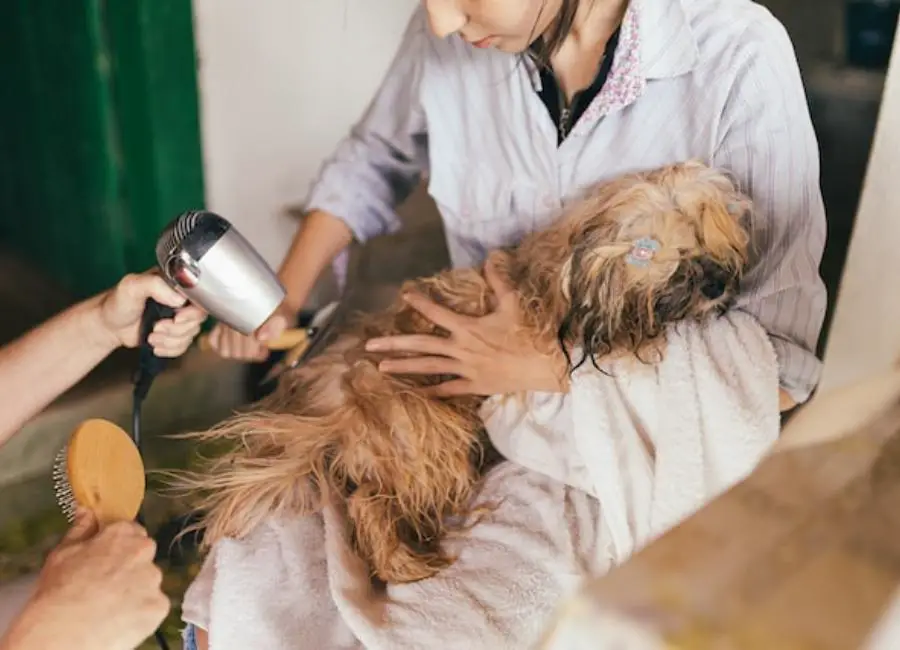
Welcome to a short guide on how to control your dog shedding!
If you’re a dog owner, you know how frustrating it can be to constantly clean up after their shedding.
But don’t worry, we’ve got some simple tips to help you keep your home fur-free and ensure your pup is happy and healthy.
In this post, we’ll explore some easy ways to control your dog’s shedding and make your life a whole lot easier.
Before we continue, let’s quickly outline the common causes of shedding in dogs…
Causes of shedding in dogs
Here are some common causes of shedding in dogs:
- Breed: Different breeds of dogs have varying amounts of fur and shedding patterns. Breeds with thicker coats or longer fur such as Huskies or Golden Retrievers are more prone to shedding.
- Seasonal Changes: Dogs tend to shed more during the changes of seasons, notably spring and fall, due to temperature adaptation.
- Nutritional Deficiency: Improper diet lacking balanced nutrition and essential vitamins and minerals could lead to poor fur quality and excessive shedding.
- Hormonal Changes: Hormonal changes in dogs like pregnancy, heat cycle, and thyroid disorders could cause excessive or abnormal fur shedding.
- Allergies: Allergies to certain foods, medications or environmental factors like pollen, dust, or flea bites can lead to irritated skin and severe shedding.
- Infections and Parasites: External parasites like fleas, mange, and internal parasites like worm infestations, and fungal, or bacterial infections could cause hair shedding in dogs.
- Stress and Anxiety: Dogs who are subjected to stressful conditions like moving, loud noises, or anxiety disorders can also experience shedding as a side effect.
- Illness or Disease: Various diseases may cause hormone imbalances or nutrient deficiencies, leading to fur loss or excessive shedding in dogs.
- Aging: Older dogs tend to shed more due to a decrease in skin elasticity, nutritional absorption, and metabolism.
How To Control Dog Shedding
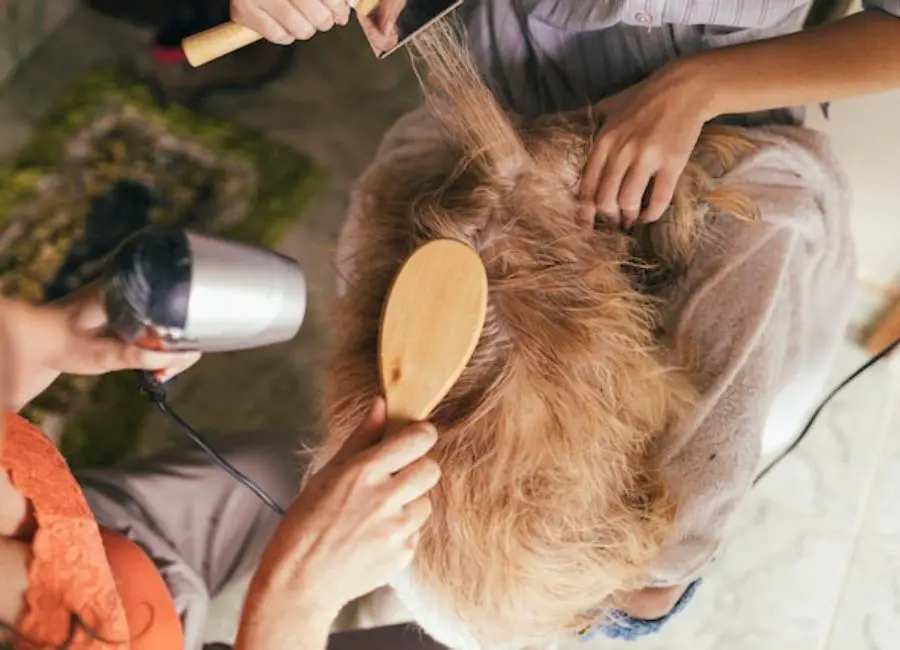
The best way to control shedding in dogs is regular brushing, bathing, regular exercise, placing your dog on high-quality dog food, keeping your dog away from all sorts of allergies, regular medical check-ups, and avoiding fleas attacks.
Let’s break it down further…
Here are some simple ways to control dog shedding:
1. Brush your dog regularly

Controlling dog shedding requires regular brushing because it assists in removing stray hair and prevents matting.
Additionally, brushing helps to keep the coat healthy and lustrous by dispersing natural oils throughout it.
Depending on the coat type of your dog, the brush you use will vary, but a slicker brush or shedding blade is typically useful.
At least once each week, or more often if your dog has a thicker coat, brush your dog.
Learn more about the benefits of regular grooming for dogs.
2. Bathe your dog
An effective technique to cut down on shedding is to bathe your dog once every three months.
To keep the skin supple and healthy, use a gentle dog shampoo and conditioner.
Make careful to properly rinse the shampoo and conditioner off the skin to remove any residue that can irritate it.
Avoid bathing your dog too regularly because doing so will deplete the skin of its natural oils.
3. Feed your dog a healthy diet
A nutritious diet can decrease shedding by encouraging a healthy coat.
Assuring that your dog consumes a diet high in protein, omega-3 fatty acids, and other nutrients that support healthy skin and fur is important.
The finest meal choices for your dog’s unique needs should be discussed with your veterinarian.
Poor skin and coat health can result from feeding your dog a low-quality diet, which can promote shedding.
4. Vacuuming your home regularly
By eliminating dander and stray fur from carpets, rugs, and furniture, regular vacuuming can help reduce shedding.
To ensure that you are efficiently cleaning pet hair from your home, use a vacuum cleaner with a HEPA filter.
To clean furniture and other surfaces where pet hair tends to gather, you might also want to think about using a lint roller or pet hair remover.
5. Control fleas and ticks
The skin of dogs can get irritated and shed excessively as a result of fleas and tick attacks.
To keep your dog free of parasites, use the flea and tick preventatives that your veterinarian has prescribed.
Parasite infestations can cause hair loss and skin irritation, which can lead to excessive shedding
6. Use supplements
Supplementing with omega-3 fatty acids can help your dog’s skin and coat health and lessen shedding.
Fish oil and other sources are good places to find these vitamins. In particular, supplements can help dogs with flaky, dry, or itchy skin.
Omega-3 fatty acids decrease inflammation, increase moisture, and stimulate hair growth to maintain a healthy coat and skin.
Ask your veterinarian which supplements are best for the individual requirements of your dog.
7. Limit your dog’s exposure to the sun
The skin of your dog can become damaged and shed as a result of sun exposure.
Reduce your dog’s exposure to the sun, particularly during the hottest times of the day.
To shield your dog’s skin from damaging UV rays, use sunscreen formulated for animals.
Dry, itchy skin and an increase in shedding are side effects of too much sun exposure.
8. Provide your dog with plenty of water
A healthy coat and skin of a dog can depend on enough water.
Make sure your dog always has access to fresh water, particularly in the summer or right after an activity.
Dry skin from dehydration can cause more shedding.
9. Reduce stress around your dog
Dogs who experience stress may also shed more.
Dogs can become anxious when their routines change, when they are exposed to unfamiliar situations, and when they are separated from their owners.
Stress and shedding can be decreased by giving your dog a relaxed and secure environment, regular exercise, and mental stimulation.
10. Keeping your dog’s bedding clean
Shedding can be decreased by keeping your dog’s bedding clean.
Wash your bedding at least once each week to get rid of dander, grime, and loose hair.
Avoid using fabric softeners or dryer sheets because they can irritate your dog’s skin and instead use a moderate detergent.
11. Use a humidifier
Excessive shedding might be a result of dry air.
A humidifier can be used to keep the air at a constant humidity level and lessen shedding.
Additionally, it aids in avoiding dry and itchy skin, particularly in the winter.
12. Use a de-shedding tool
A brush that has been specially made to remove extra hair from dogs’ undercoats is known as a de-shedding tool.
Its cutting edge is sharp and can cut through the fur deeply to remove loose hair without harming the topcoat.
By using a de-shedding tool, shedding can be cut by up to 50%.
To prevent skin irritation, it’s crucial to use the tool correctly and refrain from over-grooming.
Learn more about small dogs that shed less.
13. Regular vet visits
The identification and treatment of underlying health issues that may result in excessive shedding can be aided by routine veterinary consultations.
Shedding can be brought on by hormone imbalances, infections, and skin allergies.
To control these diseases and lessen shedding, your veterinarian might suggest therapies and medicines.
Learn more about the benefits of regular medical check-ups.
Frequently Asked Questions
What causes excessive shedding in dogs?
Excessive shedding in dogs can be caused by a variety of factors such as genetics, health issues, nutritional deficiencies, allergies, changes in the weather, or stress.
Can a proper diet help reduce shedding in dogs?
Yes, a proper diet is essential for reducing shedding in dogs.
Feeding your dog a high-quality, nutrient-rich diet can improve their coat health and reduce shedding.
What supplements can I give my dog to reduce shedding?
Omega-3 fatty acid supplements can help to reduce shedding in dogs by improving the health of their skin and coat.
You can also add flaxseed oil or fish oil to their diet to achieve the same effect.
How often should I groom my dog to reduce shedding?
Regular grooming, brushing, and bathing can help to reduce shedding in dogs.
Depending on the breed and coat, you may need to groom your dog once a week or even daily to minimize shedding.
Learn more about medium size dogs that shed less.
Are there any home remedies to reduce shedding in dogs?
Yes, there are certain home remedies that can help to minimize shedding in dogs such as adding a teaspoon of olive oil to their food, giving them a bath with an apple cider vinegar solution, using a humidifier in dry weather, and ensuring they are well-hydrated.
Is there any way to eliminate shedding in dogs completely?
Unfortunately, shedding is a natural process in dogs and cannot be completely eliminated.
However, by taking proper care of your dog’s coat and health, you can minimize shedding and keep your home clean and free of excess pet hair.
Learn more about large dogs that shed less.
Conclusion
In conclusion, controlling dog shedding can feel like a never-ending battle, but with the right tools and techniques, you can keep your home clean and your furry friend comfortable.
Remember to brush regularly, bathe as needed, and provide a healthy diet to keep your dog’s coat shiny and healthy.
By following these simple steps, you can enjoy more quality time with your pet without the mess!
Recommended post: Best Ways To Keep Fleas Off Dogs.

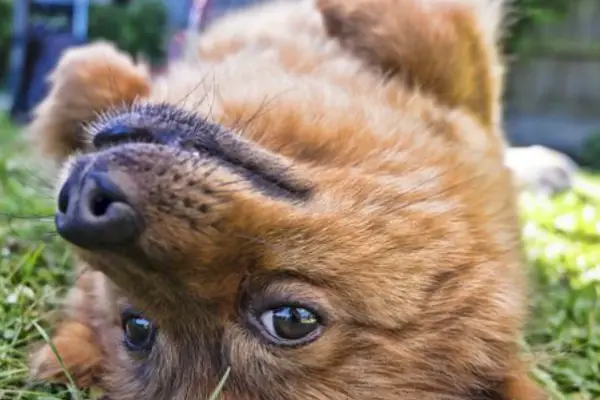
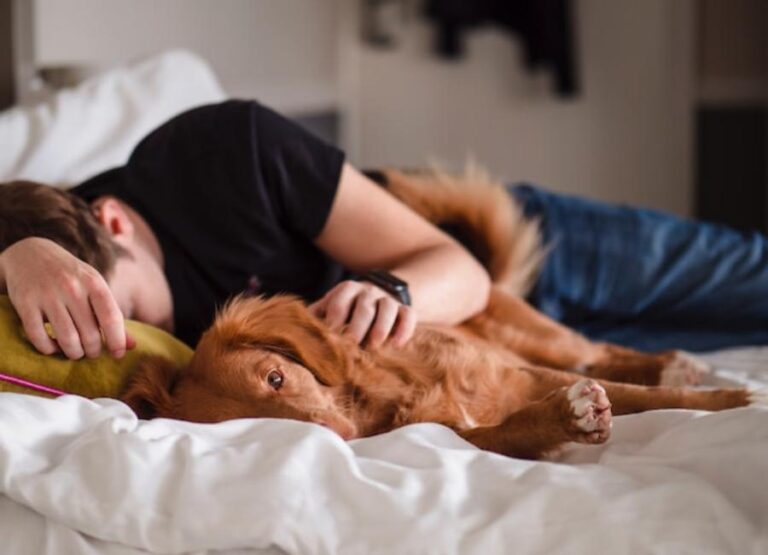
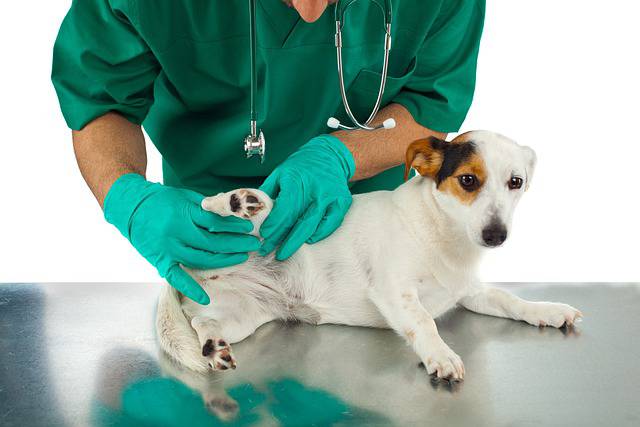

![Cancer In Beagles Symptoms [10 Potential Symptoms] Cancer In Beagles Symptoms](https://petcreeks.com/wp-content/uploads/2023/05/Cancer-In-Beagles-Symptoms-768x555.jpg)
![Eye Trauma in Dogs [Signs, Causes & More] Eye Trauma in Dogs](https://petcreeks.com/wp-content/uploads/2023/10/pexels-cynthia-vh-1572849.jpg)